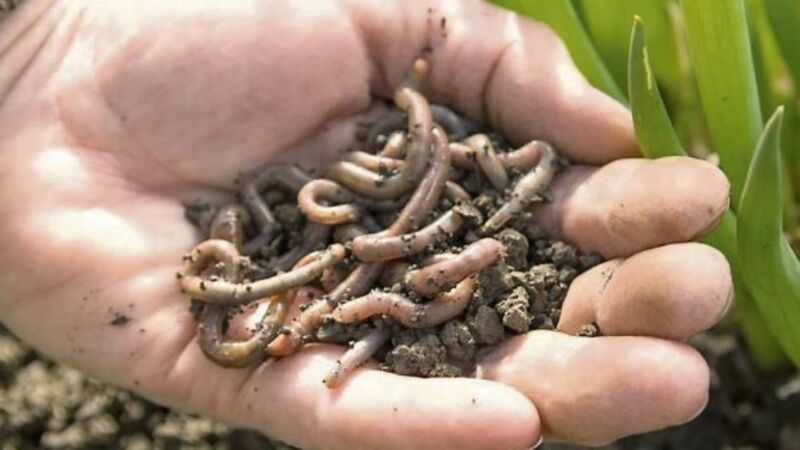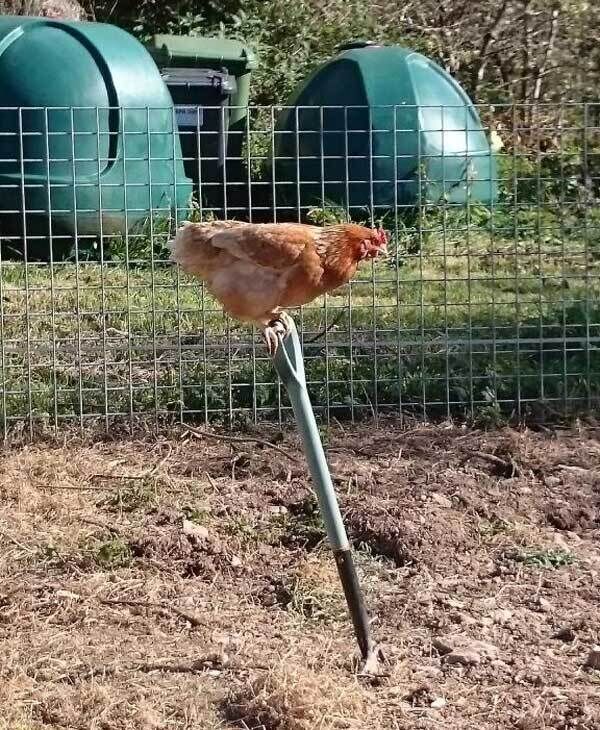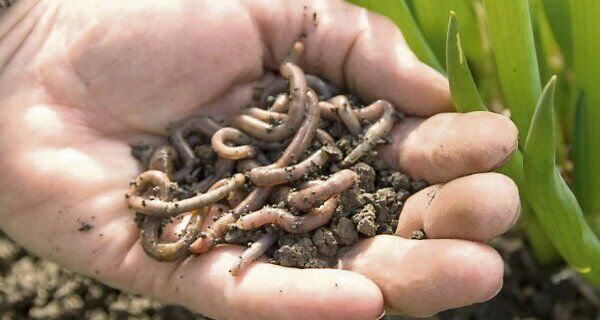What worms do all day apart from boosting soil ecosystem

I don’t know how but our native name for the common earthworm is péist talún (earth pest).
Hell, we got that one wrong. The common earthworm (Lumbricus terrestris) and the 26 other earthworm species living in Irish soils are far from pests.
They are fundamental to the ecosystem of our soil and beneficial to our crop yields and health of ornamental plant varieties.
And they do it effortlessly, it’s just how they are. It’s just what they do all day, every day.

They do three things that have a huge impact on the health of our soil.
They move, they eat (and I beg your pardon but) they defecate.
I know once upon a time in our life beginnings that those were the only skills we possessed too and now we can kind of master parking cars, texting and planting bulbs the right way up.
However, we don’t need worms to do anything more because those simple basics are everything to the garden.
Okay, sun and rain and your continued endeavours play a part but without these guys the garden would be as lifeless as tarmac.
Making the earth move
An earthworms’ body is made up of multiple ring-like segments called annuli which are covered in tiny bristles known as setae.
The setae can move in and out displacing soil around the worm helping to channel out burrows and also to grip the walls of those burrows and facilitate stability of their forward and backward movement which is actioned by contraction and release of their muscular bodies.
All day they move about looking for food and a comfort zone in soil.
Earthworms do not have lungs, rather they breathe through the surface of their skin which needs to stay moist to facilitate oxygen absorption.
So they move to different depths and locations depending on the moisture content of your soil.
You know on rainy days when you notice earthworms surfacing, that’s not to enjoy the rain or to sacrifice themselves to the birds.
It’s a survival thing — rain soaks soil and overly soaked soil is deprived of oxygen so they surface like submarines to breathe and not drown.

It’s a precarious act as they are somewhat allergic to sunlight — prolonged exposure paralyses them.
They will however, gladly surface at night to feed off leaves and garden compost/manure pulling it down into lower levels of the soil to munch in safety.
This toing and froing naturally aerates soil, it creates channels for more efficient irrigation and drainage.
All those channels and pockets add to porosity and permeability and act to improve water filtration and absorption rates making the soil surface less likely to contribute to runoff and it facilitates run off from surrounding structures more effectively too.
Less flooding, less erosion and less watering in drier times.
Earthworm movement also ameliorates the soil by continuously circulating particles and nutrients.
It produces a soil structure more conducive to the development of healthy root systems. Earthworms can even break up hardpan. Many can burrow to two meters.
Lean, mean, eating machine
As earthworms burrow they consume some soil and any decomposing organic matter in their way, they will also pull surface organic matter (leaf litter, compost, etc.) down into their burrow to decompose enough for their toothless mouths to process.
They are bit like waste disposal units to the garden. Not only do they remove surface debris but also fungal spores from the environment. They are essential to the natural cycle of decay and growth within the garden.
They also are partial to swallow some living organisms too — nematodes, protozoans, rotifers and other microscopic aquatic lifeforms that inhabit the thin films of water that gather around soil particles, as well as dining on bacteria and fungi.
An average earthworm can eat up to one third its own body weight in a single day — some can eat much more.
They do not eat healthy living plant tissue (roots, stems, foliage) so they are not harming your crops and plants.
They will munch the decaying plant matter and help clean up and restrict plant diseases in that process.
They also feed on the decomposing remains of animals in case you missed that dead sparrow under the hedge or the hedgehog that never made it out of the log pile.
And all the nutrients that they acquire from all these sources get mixed with their gastric juices and returned to the earth in a more bioavailable (more easily absorbed by plant roots) manner to your soil.
Garbage in but not garbage out
When earthworms defecate they enrich the earth.
This is the rise in vermicomposting (different worms but no less effective) as a go to for allotmenteers and smallholders — worm digested soil is healthier.
It has more humus (the slick grease that oils the wheels of soil formation and function).
More humus equals more nutrient holding capacity, more moisture retention by soil particles, better soil structure.
A single earthworm can digest 36 tons of soil in one yearn. Now I’m better at art than maths but that’s a fair amount of added humus.
Worm-digested soil may also have more bioavailable phosphorous, which, as we know, is key to plant health and stronger crop yields.
Those earthworm castings are rich in nitrogen, potassium and many trace elements too.
There are scientific studies that estimate that earthworm castings can contain anything from 5 to 10 times the quantity of nitrogen, phosphorus, and potassium that the worm had ingested from the organic matter.
So there is some powerful alchemy going on.
Earthworm castings not only deliver nutrients to the soil but as they adhere to soil particles they also help bind calcium, iron, and sulfur too — so any organic and (please god you are not but) inorganic feeds too will get retained longer.
How to Encourage Earthworms in Your Garden
Add more food for them. Dig in or top dress with more homemade compost and any well-rotted farm-yard manure you can get your gloved hands on.
Mulch a corner with grass clippings and chopped leaves from a hedge trim.
If your garden is compacted, you will have fewer worms, so while I often argue no-dig — so as to not expose worms and other beneficial soil organisms to the oxidation stress of light and air and also to the mouths of predators — perhaps a careful forking over is in order.
While the poet William Blake may have said “the cut worm forgives the plough” I am not so sure.
No-dig research and its acceptance as practice is ongoing but a few years ago an Australian report showed after 3-4 years of zero-tilling, fields had twice as many worms as cultivated soils.
Shallow cultivation should not be a major issue. You can visit a friend and borrow a prized-up sod and do a worm transplant. They are prodigious breeders and the few in a clump will soon be doing their own natural rotovation.
Soil Ph is important. Earthworms prefer alkaline soil and they thrive in soils with good calcium levels. So timely liming is not a bad idea. This is when you would be doing that for veg beds anyway.
Above all, the best thing you can do is to
reduce use of fertilisers, herbicides and fungicides and chemicals such as ammonium sulfate and copper (including Bordeaux) as they lower earth worm fertility rates and some stronger chemicals can be toxic.









